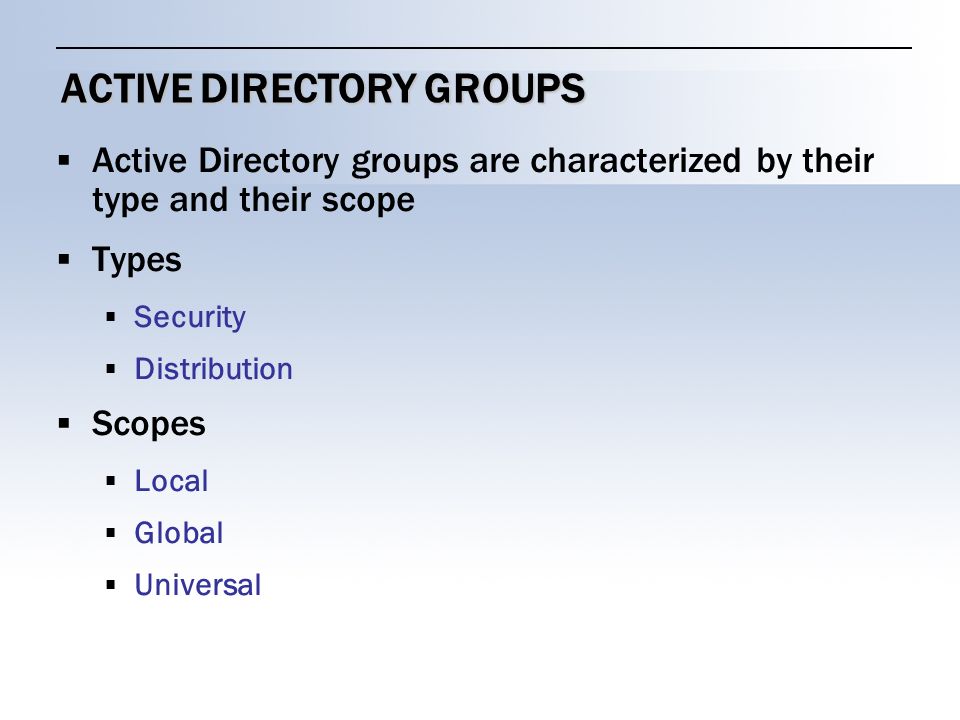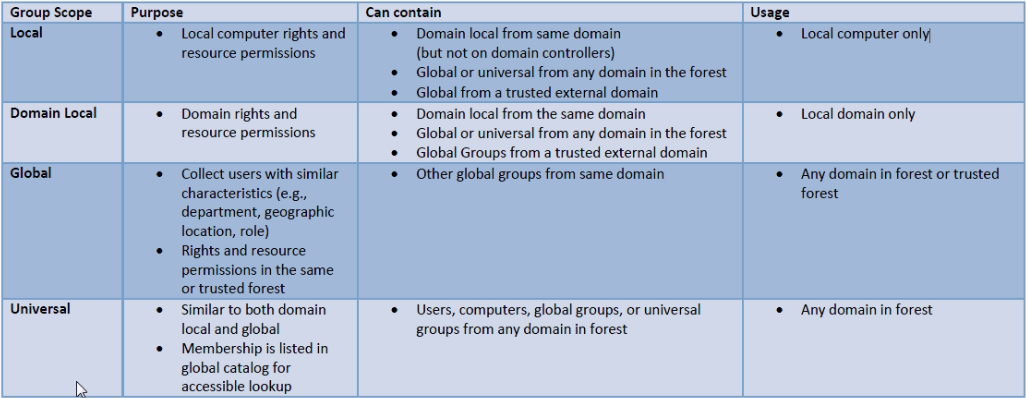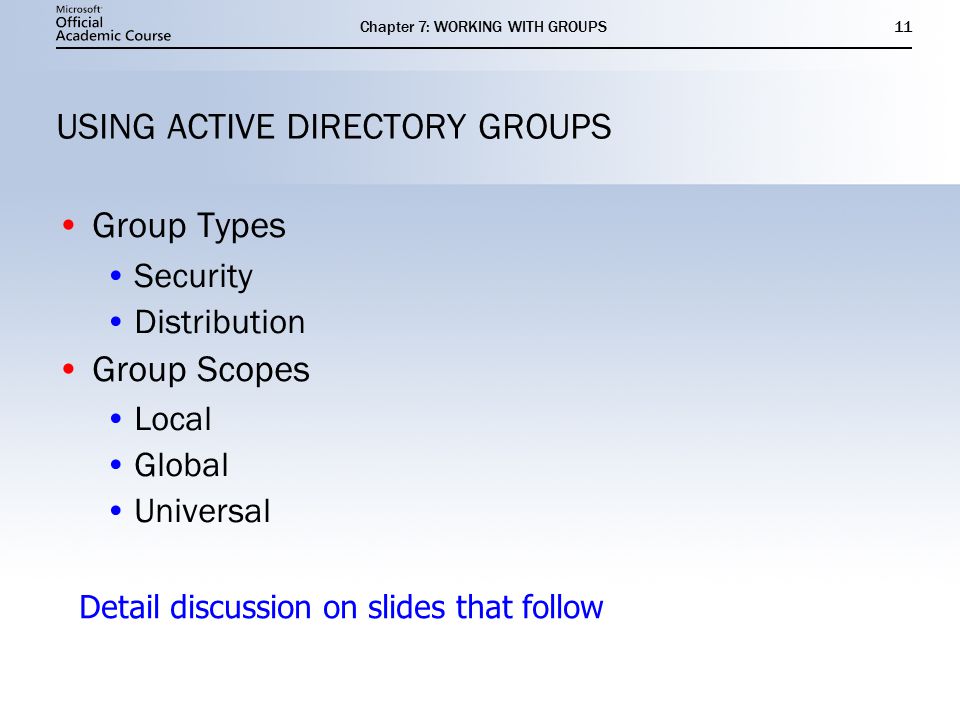This Active Directory group management best practices guide explains how to properly manage Active Directory distribution groups and security groups.
May 14, 2013 · Hello gurus, I know there have been enough articles about the difference of these 3 group scopes on the Internet, but I still can’t understand the difference

Aug 26, 2017 · Key recommendations: 1. Don’t run your frequency


Authentication Domains. When Cisco ISE is joined to an Active Directory domain, it will automatically discover the join point’s trusted domains.





Active Directory is a distributed multimaster replicated database. All domain controllers host a full replica
Microsoft Exchange & Active Directory group management tools by Ensim automates the provisioning & maintenance of Active Directory security group management & Exchange distribution list management.
.gif)
Active Directory (AD) is a structure used on computers and servers running the Microsoft Windows operating system (OS). AD is used to store network, domain, and user information and was originally cre
The Active Directory Group reports enables the administrators to get a quick view of the Security Groups, Distribution Groups, Top big groups in terms of objects, and so on, in just a few clicks. These reports ensure that you are free from the taxing task of writing scripts for Active Directory

This lesson will teach the three types of groups in Active Directory: Universal, Global, and Domain Local and the main functions of groups in Active Directory.
This reference topic for the IT professional describes the default Active Directory security groups. There are two forms of common security principals in Active Directory: user accounts and computer accounts. These accounts represent a physical entity (a person or a computer). User accounts can also
